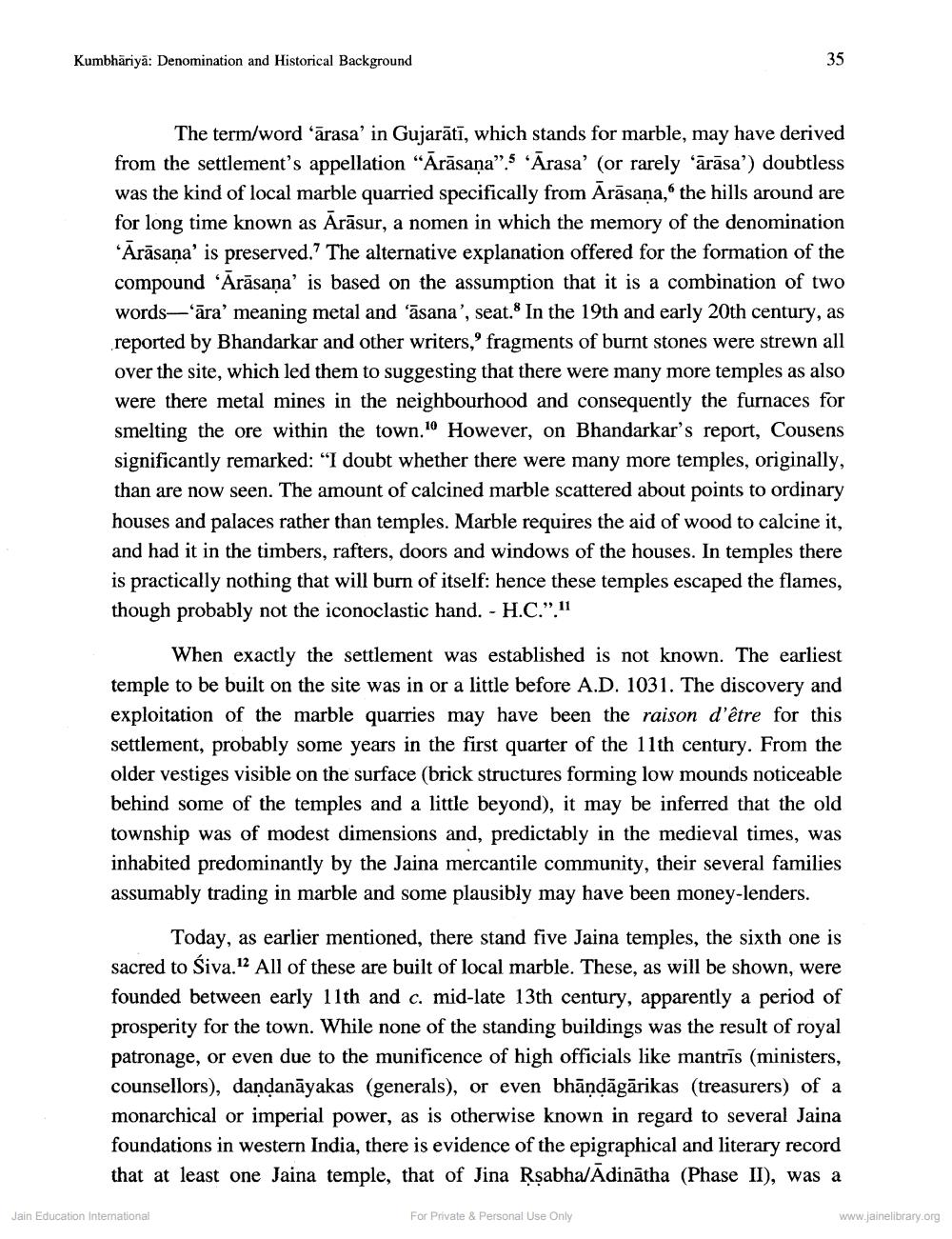________________
Kumbhariyā: Denomination and Historical Background
The term/word 'ārasa' in Gujarātī, which stands for marble, may have derived from the settlement's appellation "Ārāsaṇa". "Arasa' (or rarely 'äräsa') doubtless was the kind of local marble quarried specifically from Ārāsaṇa, the hills around are for long time known as Ārāsur, a nomen in which the memory of the denomination 'Arasana' is preserved." The alternative explanation offered for the formation of the compound 'Ārāsana' is based on the assumption that it is a combination of two words-'ara' meaning metal and 'asana', seat." In the 19th and early 20th century, as reported by Bhandarkar and other writers, fragments of burnt stones were strewn all over the site, which led them to suggesting that there were many more temples as also were there metal mines in the neighbourhood and consequently the furnaces for smelting the ore within the town. However, on Bhandarkar's report, Cousens significantly remarked: "I doubt whether there were many more temples, originally, than are now seen. The amount of calcined marble scattered about points to ordinary houses and palaces rather than temples. Marble requires the aid of wood to calcine it, and had it in the timbers, rafters, doors and windows of the houses. In temples there is practically nothing that will burn of itself: hence these temples escaped the flames, though probably not the iconoclastic hand. - H.C."."
35
When exactly the settlement was established is not known. The earliest temple to be built on the site was in or a little before A.D. 1031. The discovery and exploitation of the marble quarries may have been the raison d'être for this settlement, probably some years in the first quarter of the 11th century. From the older vestiges visible on the surface (brick structures forming low mounds noticeable behind some of the temples and a little beyond), it may be inferred that the old township was of modest dimensions and, predictably in the medieval times, was inhabited predominantly by the Jaina mercantile community, their several families assumably trading in marble and some plausibly may have been money-lenders.
Today, as earlier mentioned, there stand five Jaina temples, the sixth one is sacred to Śiva."2 All of these are built of local marble. These, as will be shown, were founded between early 11th and c. mid-late 13th century, apparently a period of prosperity for the town. While none of the standing buildings was the result of royal patronage, or even due to the munificence of high officials like mantris (ministers, counsellors), dandanayakas (generals), or even bhāṇḍāgārikas (treasurers) of a monarchical or imperial power, as is otherwise known in regard to several Jaina foundations in western India, there is evidence of the epigraphical and literary record that at least one Jaina temple, that of Jina Ṛṣabha/Adinatha (Phase II), was a
Jain Education International
For Private & Personal Use Only
www.jainelibrary.org




